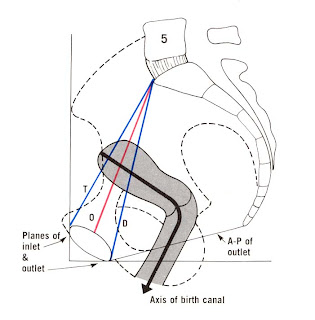
Pinna- yellow elastic cartilage except lobule
Cartilage covered with skin: tightly on lateral side, loosely on medial side
Incisura terminalis- deficiency of cartilage between tragus and crus of helix-used for endaural approach in surgeries of meatus or mastoid
Conchal cartilage- graft for correction of depressed nasal bridge
Pinna with skin- for repairing defects of nasal ala
Graft material for reconstructive surgery of middle ear: Cartilage of tragus, perichondrium of tragus/concha, fat from lobule
Length of external auditory canal- 24mm
Outer 1/3rd (8mm)- cartilage
Fissures of santorini-2 in number-risk of parotid infection to & fro
skin contains hair follicles,ceruminous glands & pilosebaceous glands: hence thick in cartilagenous part-risk of staphylococcal infection of hair follicles
Inner 2/3rd (16mm)- bony
skin lining- thin-no gland, no hair
isthmus- 6cm lateral to tympanic membrane-risk of impaction of foreign body medial to isthmus
Anterior recess- anteroinferior part of the deep meatus- beyond isthmus- cesspool of discharge & debris in case of external & middle ear infections
Foramen of Huschke- deficiency in anteroinferior part of bony meatus- seen upto 4yrs of age- may persist in adults too.
Tympanic Membrane: 9-10 mm tall, 8-9 mm wide, .1mm thick
Posterosuperior part more lateral than anteroinferior part
Pars tensa- most of TM
-peripheri thickened to form a fibrocartilaginous ring called as annulus tympanicus, which fits in the tympanic sulcus.
central part tented inwards-umbo-at the tip of malleus
cone of light- anteroinferior part
shadow of round window is on the posterior part, behind the tip of malleus and below the shadow of incudo-stapedial joint
Pars Flaccida-
above lateral process of malleus; between the notch of Rivinus and the anterior and posterior malleal folds
slightly pinkish appearance
Fibrous layers in the pars flaccida is thin and not organised into various types of fibres as in pars tensa
Relations of external acoustic meatus:
superior-middle cranial fossa
posterior-mastoid air cells&facial nerve
inferior-parotid gland
anterior-temporomandibular joint
Posterosuperior part of deep meatus near the tympanic membrane is related to the mastoid antrum.
Sagging is seen during acute mastoiditis
Nerve supply to pinna,external auditory canal, TM:
1.Great auricular nerve-C2,3-most of medial surface & only posterior part of lateral surface
2.Lesser occipital nerve-C2-upper part of medial surface
3.Auriculotemporal nerve-V3-tragus,crus of helix & adjacent part of helix, anterior wall & roof of external auditory canal & anterior half of lateral surface of TM
4.Auricular branch of vagus(CN-X)(Arnold's Nerve) (also a sensory branch of CN-VII)- concha, corresponding eminence on medial surface, Posterior wall & floor of external auditory canal, posterior half of lateral surface
5.Tympanic branch of CN-IX (Jacobson's Nerve)- Medial surface of TM
Roof of middle ear- tegmen tympani (also forms the roof of aditus & antrum)
Floor-thin plate of bone- separates from jugular bulb- sometimes only mucosa separates middle ear from jugular bulb
Protympanum-portion of middle ear around the tympanic orifice of eustachian tube
Anterior wall- thin plate of bone separating middle ear from internal carotid artery-2 openings( eustachian tube & the upper one for the canal of tensor tympani muscle
Posterior wall contains pyramid- through the summit of which appears the tendon of stapedius
Aditus- an opening through which attic communicates with antrum-lies above pyramid
Facial nerve runs in the posterior wall just behind the pyramid.
Facial recess(posterior sinus)- a depression in the posterior wall lateral to the pyramid, bounded medially by the vertical part of VIIth nerve- laterally by the chorda tympani-above by the fossa incudis-surgically a direct access is made through it to the middle ear without disturbing the posterior meatal wall-intact canal wall technique
Medial wall: formed by the labyrinth
promontory-due to basal coil of cochlea
oval window into which fixed is the foot plate of the stapes- above oval window is the canal for facial nerve
Above facial canal is the prominence of lateral semicircular canal
Anterior to the oval window, the medial wall presents a hook like projection called the processus cochleariformis-the tendon of tensor tympani takes a turn here to get attachment to the neck of malleus
Processus cochleariformis is also marks the level of the genu of the facial nerve
round window/fenestra cochleae- covered by the secondary tympanic membrane
Medial to the pyramid- deep recess called sinus tympani-bounded by the subiculum below & ponticulus above
Lateral wall-scutum-bony outer attic wall-surrounding the TM
Mastoid Antrum:
Large, air containing space in the upper part of the mastoid-communicates with the attic through the aditus
roof-tegmen antri-continuation of tegmen tympani
lateral wall thickness in adult-1.5cm-marked externally on the surface of mastoid by suprameatal triangle( McEwen's Triangle)
Aditus ad Antrum:
Aditus-opening through the attic communicates with the antrum
The bony prominence of the horizontal canal lies on its medial side, fossa incudis(attached the short process of incus)-lies laterally.Facial nerve courses just below aditus
Mastoid air cell system:
Cellular/pneumatized-mastoid cells well developed-septa thin
Diploetic-Mastoid consists of marrow spaces & a few air cells
Sclerotic/acellular-no cells/marrow spaces-antrum small-sigmoid sinus antepositioned
location wise,
1.zygomatic cells-in the root of zygome
2.tegmen cells-extending in tegmen tympani
3.perisinus cells-overlying sinus plate
4.retrofacial-round the facial nerve
5.perilabyrinthine- above,below&behind the labyrinth,some of them passing through the arch of superior semicircular canal-may communicate with petrous apex
6.peritubal-around the eustachian tube-along with hypotympanic cells, they also communicate with petrous apex
7.tip cells-quite large, lie medial & lateral to the digastric ridge in the tip of mastoid
8.marginal cells-lying behind the sinus plate & may extend into the occipital bone
9.squamosal cells-superficial-lie in squamous part of temporal bones

























